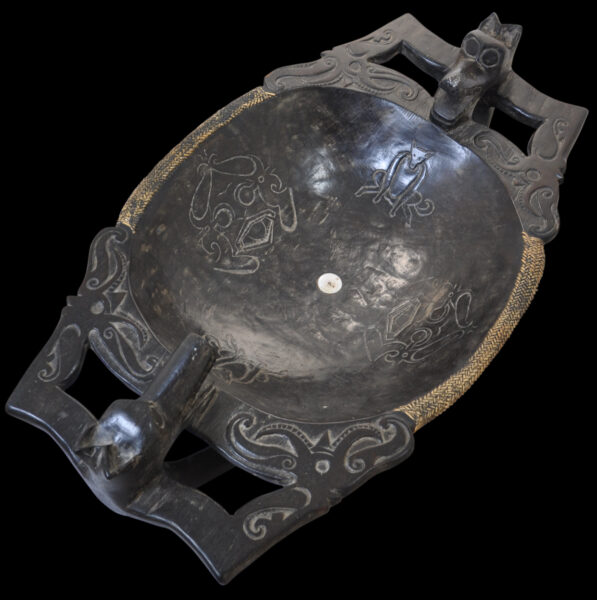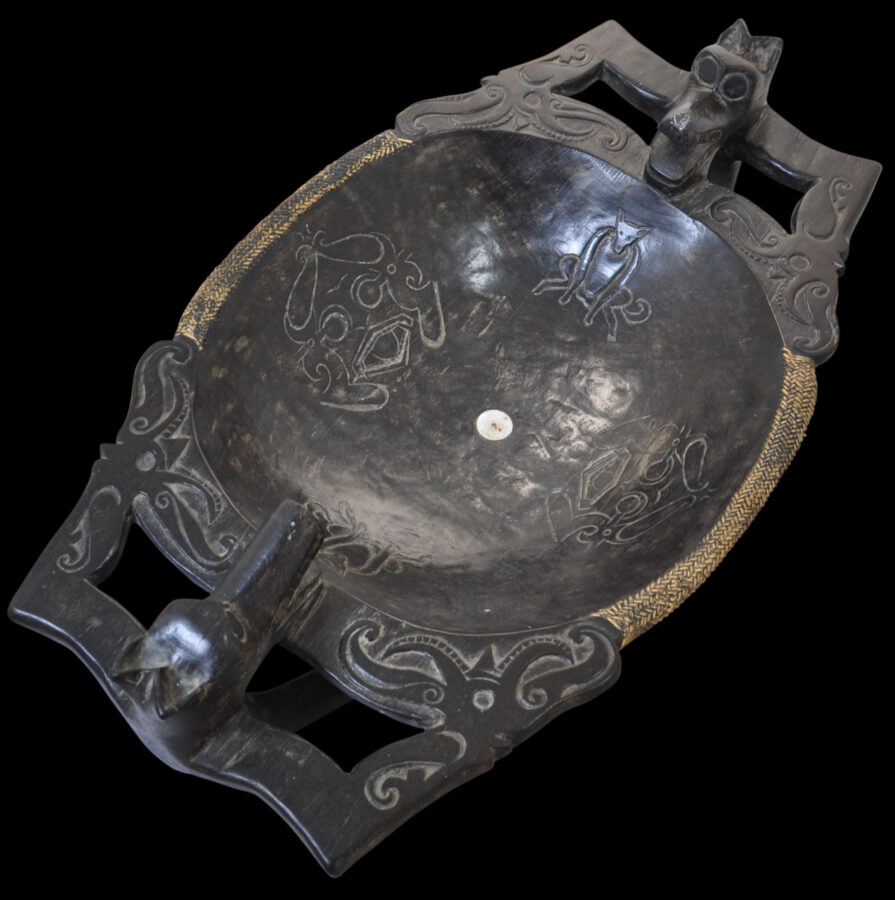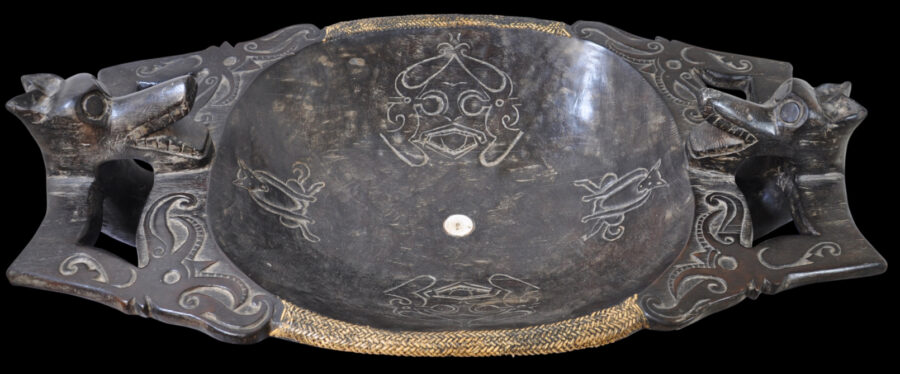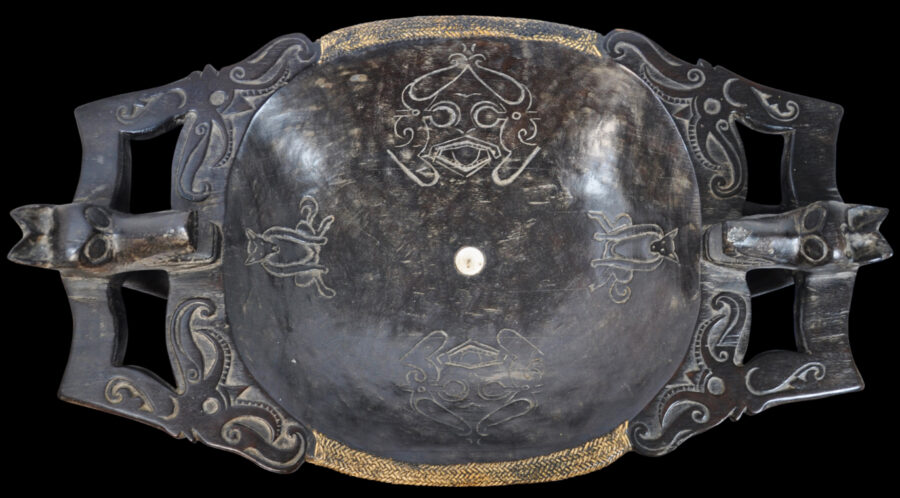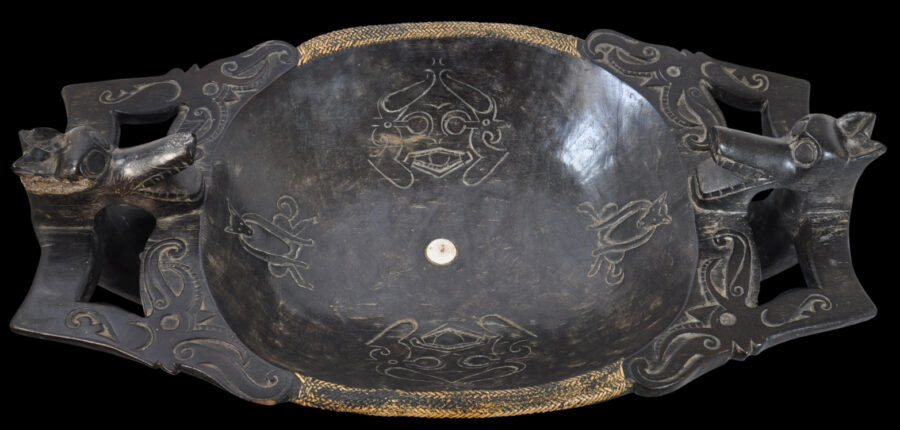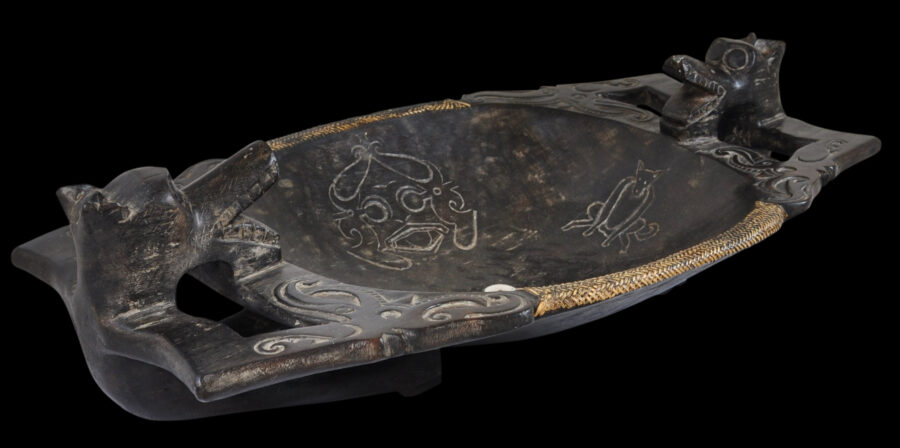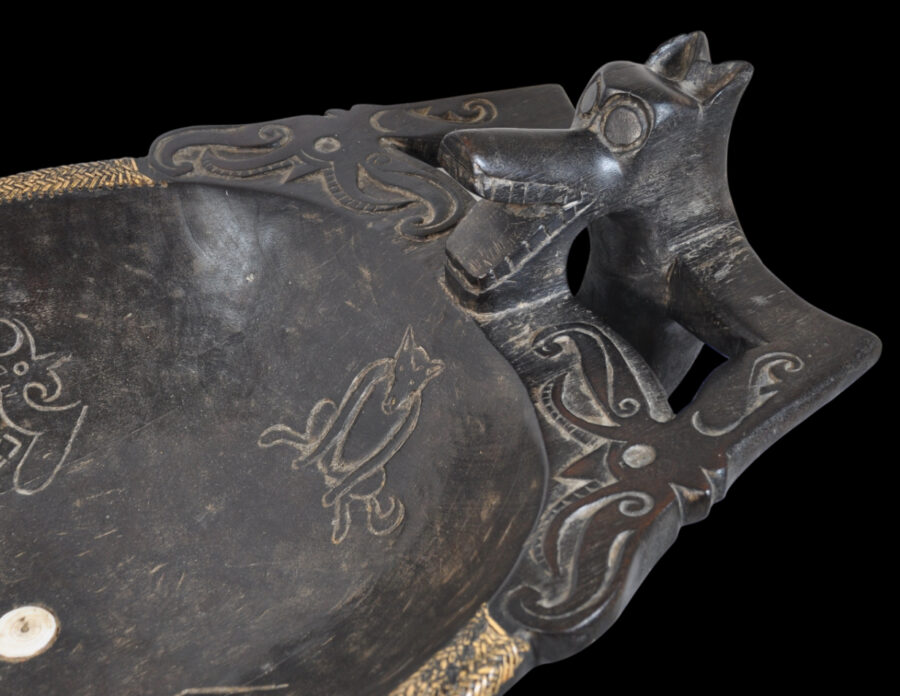This large, dramatic bowl made of solid ironwood with rattan edging is from the Dayak people of Borneo. It is notable for its size, excellent carving and unquestionable patina.
The bowl is supported at either end by a pair of aso, dragon-dog-like creatures that have talismanic, protective properties, and which mark it out as the property of a local chieftain (bowls for ordinary folk were made with an aso head at one end only.) The hands of paws of the aso creatures are beautifully carved as scrolling tendrils which themselves have anthropomorphic form.
The interior base of the bowl is inset with a shell disk. The interior sides are engraved with two dog-like creatures, and a pair of anthropomorphic demon masks.
Such bowls were used in the Rajang River Basin area to serve rice. It was believed that the hard qualities of the ironwood would permeate the rice and give strength to young men who ate the rice so that they would become warriors. They were used to serve rice to the Chieftain’s family and clan.
A similar example, formerly in the Kaneko Kazushige Collection (Kazushige was the director of Japan’s Institute of Asian Ethno-Forms and Culture) and now in the National Museum of Korea, is catalogued as a ‘bathtub for a newborn baby, Dayak’.
The Sarawak Museum has several examples of carved wooden bowls with carved aso mounts and even a table with legs carved as aso figures (see Chin, 1980, p. 82). According to Chin, aso figures are carved singularly, or as legs for tables, as bottle stoppers, war canoe bowpieces and as earrings. Later such bowls were made for colonial administrators and other visitors. The patina on the example here suggests it was used locally however.
The bowl is in excellent condition. The rattan on the rim is intact and, like the bowl itself, has an excellent, dark patina.
References
Chin, L., Cultural Heritage of Sarawak, Sarawak Museum, 1980.
Heppell, M., et al, Iban Art: Sexual Selection and Severed Heads, C. Zwartenkot/Kit Publishers, 2005.
Sellato, B. (ed.), Plaited Arts from the Borneo Rainforest, NIAS Press, 2012.


